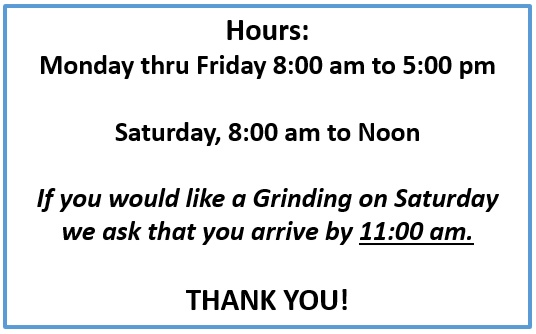|
|||||
Funding Cuts May Deepen Hunger Crisis 05/01 06:18 The Campaign Against Hunger was already struggling to feed thousands of families a week when the Trump administration pulled more than $1.3 million in grants. NEW YORK (AP) -- The Campaign Against Hunger was already struggling to feed thousands of families a week when the Trump administration pulled more than $1.3 million in grants. Demand has only increased at the New York nonprofit since the city emerged from the COVID-19 pandemic and the related economic insecurity. In a first for the pantry, however, it isn't just the jobless lining up for its fresh produce and meats. It's working people, too. Food banks typically see the most need during periods of high unemployment and yet the U.S. is facing down a hunger crisis during a relatively resilient labor market. The latest U.S. Department of Agriculture research showed there were one million more food insecure households in 2023 than 2022. Now, income stagnation and rising living costs are sending wage earners to food banks across the country -- all as the federal government shuts off funding streams that provide millions with healthier, harder-to-get groceries. The squeeze comes as Republicans discuss budget plans that hunger relief groups fear will deepen the crisis by slashing food stamp spending. "We were already in a bad state. But now we have been plunged head down into a crisis that should never have been," said Melony Samuels, executive director of The Campaign Against Hunger. "If major cuts like these continue, I would imagine that our doors will close." Higher food costs mean longer lines Funding cuts began threatening food availability in March. The USDA halted $500 million of expected food deliveries and cut another $1 billion for hunger relief programs supporting local producers. The Department of Homeland Security also rescinded Federal Emergency Management Agency grants for local governments and nonprofits -- including The Campaign Against Hunger -- to shelter and feed newly arrived noncitizen migrants after their release. "Secretary Noem has directed FEMA to implement additional controls to ensure that all grant money going out is consistent with law and does not go to fraud, waste or abuse, as in the past," DHS Assistant Secretary Tricia McLaughlin said in a statement. Samuels said her nonprofit is limiting normally bimonthly food distributions to once a month due to the lost funds, which are being withheld amid what she called "baseless allegations" from DHS that the nonprofit might have broken laws against transporting undocumented migrants. That means fewer nutritious options for the dozens of people -- some holding babies, many pushing carts -- who recently waited to shop inside The Campaign Against Hunger's Brooklyn mock-store on an overcast weekday in April. Longtime Brooklyn resident Kim Dennis has noticed the uptick in need. On top of her Supplemental Nutrition Assistance Program benefits, the 65-year-old retiree visits The Campaign Against Hunger twice each month for groceries like potatoes and pork chops that are more difficult to find at other food banks often filled with canned goods. "The lines are getting a lot, a lot, a lot, a lot," Dennis said, partially due to recent immigration waves. "Everything is going up and a lot of us cannot afford." Over half of responding food banks told Feeding America they served more neighbors this February than the same month last year. Christiana Santamaria said she visits a local food bank in Alameda, California each week to feed herself, her husband and their daughter. They struggle to cover food costs, internet bills and car payments with a monthly household income of nearly $3,000. "I mean, my husband, he works full-time. He has a quote-unquote 'good job.' But I mean, it's the military. And if even the military can't afford things, that's sad," she said. Food banks face deficits The country's largest hunger-relief network is also feeling the strain. Feeding America consists of more than 200 member food banks. Their assistance is often easier to obtain than government benefits such as SNAP that some advocates say require burdensome applications. Many families put dinner on the table through a combination of the two -- a strategy food bank leaders say could be upended if Republican lawmakers cut SNAP allotments or expand work requirements. Houston Food Bank CEO Brian Greene expects his organization, which operates the largest distribution among Feeding America partners, to lose somewhere around $4 million this year. The government pullbacks amp up that pressure. If the cuts stay, Greene said, the projected losses include $3 million for food storage and distribution, $7 million supporting local farmers and producers, and 40 tractor trailer loads a month carrying key produce and protein. Greene is trying to make up the difference through donations. But he's realistic. Surveys consistently place American philanthropy around 2% of GDP and social services receive just a sliver of that. Even if charitable contributions spiked, he said, they couldn't replace federal support. That makes SNAP availability even more critical to alleviating hunger. Cutting the program by 11%, he said, would be the equivalent of wiping out every food bank in the United States. Less predictability and variety Food purchases are funded through the Farm Bill. Trump's trade war has also generated more money for USDA to buy food commodities under a 1935 program that dedicates tariff collections toward "bonus" food purchases. What concerns hunger relief groups, however, is that the suspended purchases are covered by a different funding pot that allows the USDA great discretion when responding to economic disruptions. The first Trump administration put more than $2 billion of those funds toward The Emergency Food Assistance Program, or TEFAP. However, USDA is now reviewing $500 million allocated last fall for the program. Federal commodities programs provide some of the most reliable supplies of proteins. Vince Hall, who leads government relations for Feeding America, said TEFAP-purchased foods account for more than 20% of everything distributed by the entire network. That number rises in rural communities -- where the cost of reaching distant populations is higher and donated products are less available. The impact trickles down to smaller pantries that rely on larger food banks. Mother Hubbard's Cupboard is bracing for about 25% food reductions from a Feeding America partner in Bloomington, Indiana. "What we're likely to see then would be a dip in what are really the nutritional staples that we expect in the pantry," said Mother Hubbard's Cupboard President Megan Betz. A 2022 study measuring food pantries' value suggests participating families obtain between $600 and $1000 annually from them. That's equivalent to a couple months of food for some low-income households, according to co-author David Just, an applied economics professor at Cornell University. The centers helped cushion families from the pandemic's economic shocks. But food insecurity started rising as the government rolled back its pandemic-era assistance. Need has surpassed the height of COVID-19, according to Alameda County Community Food Bank Executive Director Reggie Young. The weight of the Oakland nonprofit's annual food distributions has doubled its pre-pandemic totals. Food insecurity nationwide is the highest it's been in about a decade, according to Just, making it "potentially a really difficult time to start cutting food assistance through the pantries." "This could cause some pretty significant pain," he said. "And I don't know that we're delivering something more efficient in the end." |
|||||











